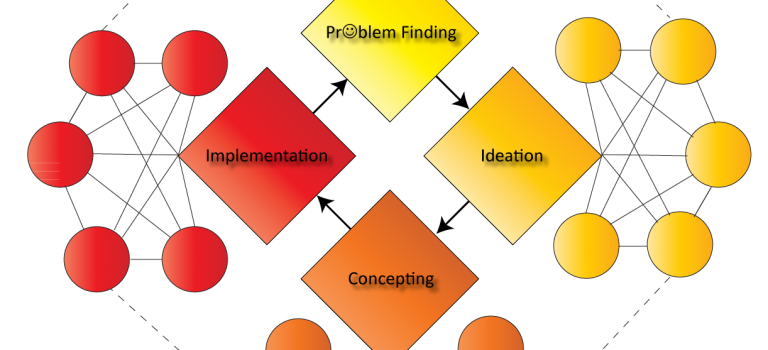Based on the rankings of the SSRN database, we are able to create a ranking of the best – most downloaded – Open Innovation and related topics articles that have been published in 2013 so far. Therefore, this is a list of brand new theories, recent case studies, preliminary results and pioneering research.
- The Theory of Crowd Capital; Prpic, J., & Shukla, P.
Abstract: We are seeing more and more organizations undertaking activities to engage dispersed populations through Information Systems (IS). Using the knowledge-based view of the organization, this work conceptualizes a theory of Crowd Capital to explain this phenomenon. Crowd Capital is a heterogeneous knowledge resource generated by an organization, through its use of Crowd Capability, which is defined by the structure, content, and process by which an organization engages with the dispersed knowledge of individuals – the Crowd. Our work draws upon a diverse literature and builds upon numerous examples of practitioner implementations to support our theorizing. We present a model of Crowd Capital generation in organizations and discuss the implications of Crowd Capital on organizational boundary and on IS research. - Leveraging External Sources of Innovation: A Review of Research on Open Innovation, West, J. & Bogers, M.
Abstract: This article reviews research on open innovation that considers how and why firms commercialize external sources of innovations. It examines both the “outside-in” and “coupled” modes of Enkel et al. (2009). From an analysis of prior research on how firms leverage external sources of innovation, it suggests a four-phase model in which a linear process — (1) obtaining, (2) integrating and (3) commercializing external innovations — is combined with (4) interaction between the firm and its collaborators. This model is used to classify papers taken from the top 25 innovation journals identified by Linton and Thongpapan (2004), complemented by highly cited work beyond those journals. A review of 291 open innovation-related publications from these sources shows that the majority of these articles indeed address elements of this inbound open innovation process model. Specifically, it finds that researchers have front-loaded their examination of the leveraging process, with an emphasis on obtaining innovations from external sources. However, there is a relative dearth of research related to integrating and commercializing these innovations.
Research on obtaining innovations includes searching, enabling, filtering, and acquiring — each category with its own specific set of mechanisms and conditions. Integrating innovations has been mostly studied from an absorptive capacity perspective, with less attention given to the impact of competencies and culture (including not-invented-here). Commercializing innovations puts the most emphasis on how external innovations create value rather than how firms capture value from those innovations. Finally, the interaction phase considers both feedback for the linear process and reciprocal innovation processes such as co-creation, network collaboration and community innovation.
This review and synthesis suggests several gaps in prior research. One is a tendency to ignore the importance of business models, despite their central role in distinguishing open innovation from earlier research on inter-organizational collaboration in innovation. Another gap is a tendency in open innovation to use “innovation” in a way inconsistent with earlier definitions in innovation management. The article concludes with recommendations for future research that include examining the end-to-end innovation commercialization process, and studying the moderators and limits of leveraging external sources of innovation. - The Golden Circle of Innovation: What Companies Can Learn from NGOs When It Comes to Innovation, Spruijt, J.P., Spanjaard, T.G.S. & Demouge, K.
Abstract: This paper examines the lessons that companies can learn from NGOs when it comes to the why, the how and the what of innovation. It explains innovation from the inside out: why is it important and what are the grand challenges? Followed by the how: in what way can innovation be managed and how does the innovation process look like in a modern economy?
This introduction is elaborated on with two case studies within NGOs in The Netherlands, Fair2 and Liliane Foundation. It leads to several conclusions and hypotheses for further research. - Sustainability-Oriented Innovation, Hansen, E.G. & Grosse-Dunker, F.
Abstract: Sustainability-oriented innovation (SOI): the commercial introduction of a new (or improved) product (service), product-service system, or pure service which – based on a traceable (qualitative or quantitative) comparative analysis – leads to environmental and (or) social benefits over the prior version’s physical life-cycle (‘from cradle to grave’). - Open Innovation and Organization Design, Tushman, M., Lakhani, K. & Lifshitz-Assaf, L.
Abstract: Abernathy’s (1978) empirical work on the automotive industry investigated relationships among an organization’s boundary (all manufacturing plants), its organizational design (fluid vs. specific), and its ability to execute product and/or process innovations. Abernathy’s ideas of dominant designs and the locus of innovation have been central to scholars of innovation, R&D, and strategic management. Similarly, building on March and Simon’s (1958) concept of organizations as decision making systems, Woodward (1965), Burns and Stalker (1966), and Lawrence and Lorsch (1967) examined relationships among organizational boundaries, organization structure, and innovation in a set of industries that varied by technology and environmental uncertainty. These and other early empirical works have led a diverse group of scholars to develop theories about firm boundaries, organization design, and the ability to innovate. - Managing Crowd Innovation in Public Administration, Collm, A. & Schedler, K.
Abstract: Governments all over the world have discovered the world of social media, for better or for worse. Whereas some of them are making every effort to prevent the unhierarchical and therefore uncontrollable (dissident) opinion-forming process in Web 2.0, others are looking for ways of putting the potentialities of this new opening-up of communication to use. One approach that is increasingly being tried out is opening up innovation processes in government. However, this opening-up of innovation processes is anything but trivial. It requires a thoroughly thought-out strategy and thus confronts government systems with extensive challenges if it is not to suffer the same fate as other unsuccessful attempts at reform in the past. In our essay, we reflect on the consequences of these challenges for public managers. - Adopting Open Innovation to Stimulate Frugal Innovation and Reverse Innovation, Hossain, M.
Abstract: Frugal innovation and reverse innovation have very recently emerged as interesting concepts. Frugal innovation is based on cost constraints to serve low-income customers in developing countries. When frugal innovation comes to developed countries and becomes commercially successful it is considered as reverse innovation. Recently, many companies, such as GE, Siemens, Procter and Gamble, etc. have engaged heavily in frugal innovation and in reverse innovation. Open innovation, on the other hand, has not been considered in the context of low-income customers in developing countries. We argue that using open innovation concept in developing countries may boast frugal innovation and reverse innovation. Consequently, quality product with low-income will be widely available not only in developing countries but also in developed countries. Hence, western companies need to change their long hold business strategies and reshape their business models. This study aims to illustrate why western companies need to be aware of and take step to become successful in the turbulent business world. - The Impact of Visibility in Innovation Tournaments: Evidence from Field Experiments, Wooten, J.O. & Ulrich, K.T.
Abstract: Contests have a long history of driving innovation, and web-based information technology has opened up new possibilities for managing tournaments. One such possibility is the visibility of entries – some web-based platforms now allow participants to observe others’ submissions while the contest is live. Seeing other entries could broaden or limit idea exploration, redirect or anchor searches, or inspire or stifle creativity. Using a unique data set from a series of field experiments, we examine whether entry visibility helps or hurts innovation contest outcomes. Our eight contests resulted in 665 contest entries for which we have 11,380 quality ratings. Based on analysis of this data set, we provide evidence that entry visibility influences the outcome of tournaments via two pathways: (1) changing the likelihood of entry from an agent and (2) shifting the quality characteristics of entries. For the first, we show that entry visibility generates more entries by increasing the number of participants. For the second, we find the effect of entry visibility depends on the setting. Seeing other entries results in more similar submissions early in a contest. For single-entry participants, entry quality “ratchets up” with the best entry submitted by other contestants previously if that entry is visible, while moving in the opposite direction if it’s not. However, for participants who submit more than once, those with better prior submissions improve more when they can not see the work of others. The variance in quality of entries also increases when entries are not visible, usually a desirable property of tournament submissions. - Digital Scholarship: Exploration of Strategies and Skills for Knowledge Creation and Dissemination, Cobo, C. & Naval, C.
Abstract: Widespread access to digital technologies has enabled digital scholars to access, create, share, and disseminate academic contents in innovative and diversified ways. Today academic teams in different places can collaborate in virtual environments by conducting scholarly work on the Internet. Two relevant dimensions that have been deeply affected by the emergence of digital scholarship are new facets of knowledge generation (wikis, e-science, online education, distributed R&D, open innovation, open science, peer-based production, online encyclopedias, user generated content) and new models of knowledge circulation and distribution (e-journals, open repositories, open licenses, academic podcasting initiatives, etc.). Despite the potential transformation of these novel practices and mechanisms of knowledge production and distribution, some authors suggest that digital scholarship can only be of significance if it marks a radical break in scholarship practices brought about through the possibilities enabled in new technologies. This paper address some of the key challenges and raise a set of recommendations to foster the development of key skills, new models of collaboration and cross-disciplinary cooperation between digital scholars. - Dissenting State Patent Regimes, Hrdy, C.A.
Abstract: Inventors who believe in open innovation should start applying for state patents instead of U.S. patents. Patenting at the state level prevents rivals from obtaining U.S. patents and generates valuable innovation spillovers in other states where the patent has no legal effect. It also creates a unique opportunity to force patent law reform from the bottom up. In exchange for filing fees, inventors can demand patents based on rules that support open innovation, like shorter terms in fast-moving industries, stricter disclosure requirements, or new restrictions on patenting by non-practicing entities. The lobbyists who stymie reform at the national level will have a much harder time blocking reform in all fifty states. Meanwhile, patent law’s dissenters need only one state to start granting patents in order to get courts, the media, and eventually Congress to pay attention.






